Follow the journey of discarded flowers once offered to Lord Ganesha at Prabhadevi's Siddhivinayak Temple, as they change hands and shades to create naturally-dyed fabrics that travel all the way to Europe
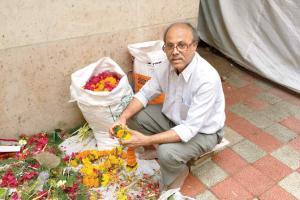
In a back room of the temple, Vinod Mahadeshwar segregates the flowers before they are delivered to Adiv Pure Nature in white gunny bags
When a hibiscus dies and bleeds, the extract is a parrot green. Rupa Trivedi, founder of Adiv Pure Nature, a natural dyeing unit housed in Andheri, says, "That was the beauty [that we discovered]. What is it going to become and how does it open? I was surprised when we did the first dye of coconut, and it turned out to be a nice, old rose pink colour."
ADVERTISEMENT
In her cabin, Trivedi is in the foreground of a row of 13 muted, pastel-shaded scarves, each of which she introduces as, "Coconut and marigold; coconut and onion; peel of pomegranate; bark of tree; marigold and madder red," and so on. The scarves, like temple garlands, carry flora in their body and blessings in their soul. For their raw material is sourced from the home of Mumbai's favourite god.
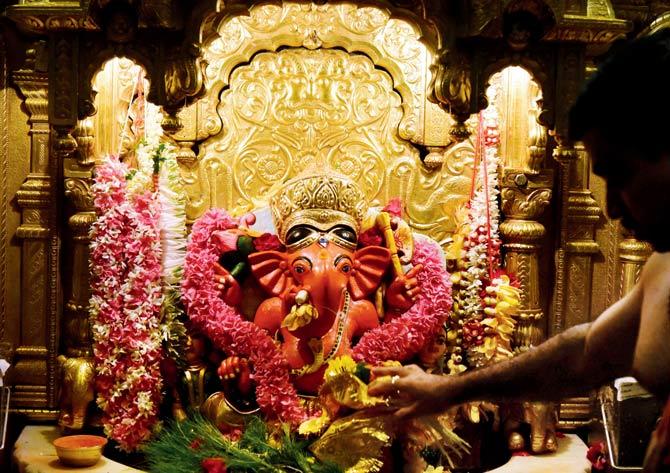
Initially, Rupa Trivedi received only marigolds from the temple. But Ganesha's favourite flower, hibiscus, nudged her to experiment with its many hues. Pic/Shadab Khan
At Siddhivinayak Temple, on a Monday morning, a flower seller tries to make five bucks with clumps of hibiscus hitched to a few blades of durva grass. Inside, a row of stalls selling malas and modaks turn the place into a perfumery. Devotees are lining up, with offerings and prayers, while Dattatray Sayaji Gargote, a 35-year-old fabric stocker at Adiv, makes his way to the back room. Every alternate day, Gargote picks up 300 kilos of hibiscuses and marigolds, at the end of his pilgrimage. On the cab ride to Andheri, he tells us, "I like this work. Subah-subah bhagwan ka darshan hota hai. People travel distances to do that. I get to do it three times a week."
At Adiv, the fresh flowers are segregated and dried on different decks, as Trivedi, clad in a black kurta-pyjama and scarf of her own making, takes us through the budding stages of her workshop. The first 25 years of her working life, Trivedi, 60, was involved with the family business of ulstrasonic equipment. In 2005, after her daughter moved to the US, she became an empty nester. "Probably, I needed another baby. So, my little obsession became a conscious passion." Her original idea was to work with artisans who were already experts in natural dyes and weaving.
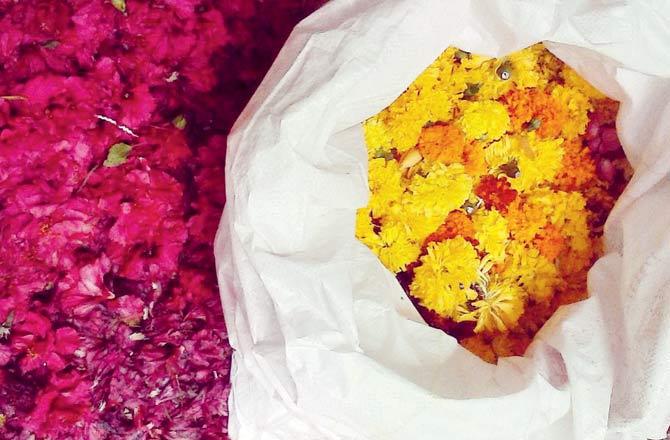
"I travelled to villages with a weaving tradition, but I had no background, no network in textiles. So, I was met with a pinch of salt, as expected. And, this was in 2005, when artisanal and khadi were not magic words. My idea had been to tone it [colours and craftmanship] down to meet the Western palate. So, I was trying to change them, and I realised only later, that creative artistry also has a lot of resistance. As a result, the quality did not match my expectations. I got fabric from a well-known natural dyeing unit in Ahmedabad, and the colour started bleeding. How was I going to give that to my European buyer? I had to do something."
So, Trivedi rolled up her sleeves and got her hands dirty in her kitchen. "[Not knowing how to dye] was my best teacher. I had no boss, and there were no parameters I was following. I researched the Internet, and borrowed a book on shibori and natural dyes. I still have the Xerox copy of that book. And this girl, who had joined as a part-time helper, would watch me at work.

She went home and used her mother's kumkum. That was one of our first pieces." After experimenting with known natural dyes such as madder root, myrabellum and pomegranate peel, Trivedi came across a seed of information that in Mexico, they use marigold, too. "I stay close to the sea, and I used to see flowers dumped into the water body. The pollution that it was creating was enough to shake me up. Of course, now Afroz [Shah, environmentalist] is cleaning up the beaches. But, there was something that I wanted to do back then. So, I started my rounds of the temples."
In 2011, Siddhivinayak, as it does for so many others, answered her prayers. "My idea was to recycle whatever I could get my hands on. But, working with a small bag of flowers is not a viable project. When the Siddhivinayak Trust approved of my decision to take their discarded flowers, the journey of the temple flowers began in earnest. It changed shade from being just a hobby to becoming a commercial project." In the last few years, Adiv has grown in scale and experimentation. "I try dyeing anything that can be thrown into a dye. Where I succeed, where I don't [is left to fate]. Initially, we sourced only marigold. But, the main flower offered to Ganesha is hibiscus. So, we worked to get more tones out of it." This was followed by coconuts, roses, onion peels, even rusty nails.
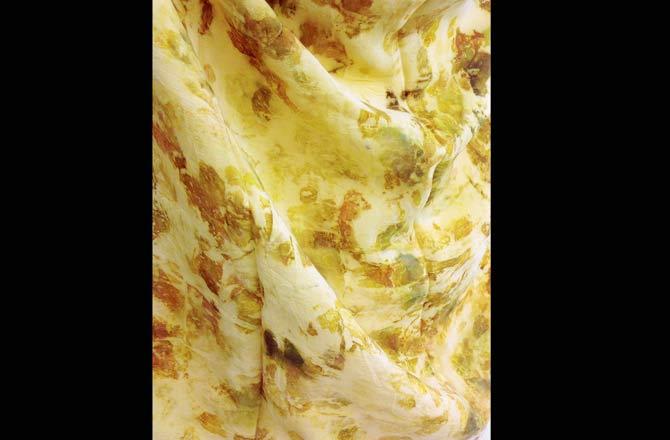
Marigolds darken as they dry and produce a mustard yellow shade. A Temple Project scarf made from marigold petals
The flowers go through 24 processes before being transferred onto fabrics. Adiv is divided into a dyeing unit and a garments unit. Once the blushed fabrics are ready, they're wheeled next door to become quilts, cushion covers, canvases and scarves, which are shipped to international labels such as Anthropologie, Dosa by Christina Kim and Eileen Fisher. "People started seeking me out." For Trivedi, what continues to be exciting is flowers showing their true colours. Recently, her experiments with organic marigolds threw up quite a different shade. As she says, "There's no standardisation here, because each flower has its own colour content. Natural dyes are mercurial."
24
No. of processes the flowers undergo before being transferred onto fabrics
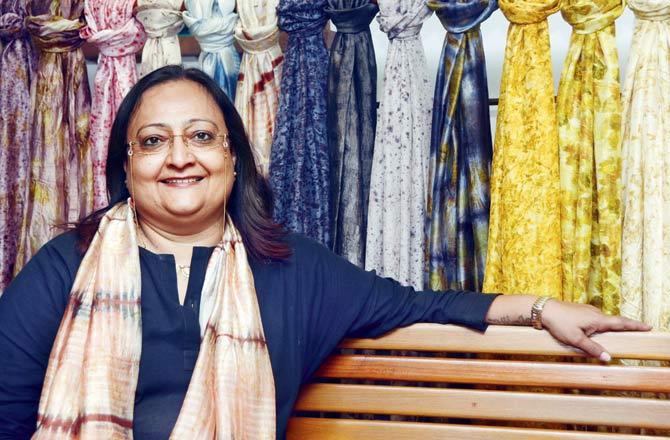
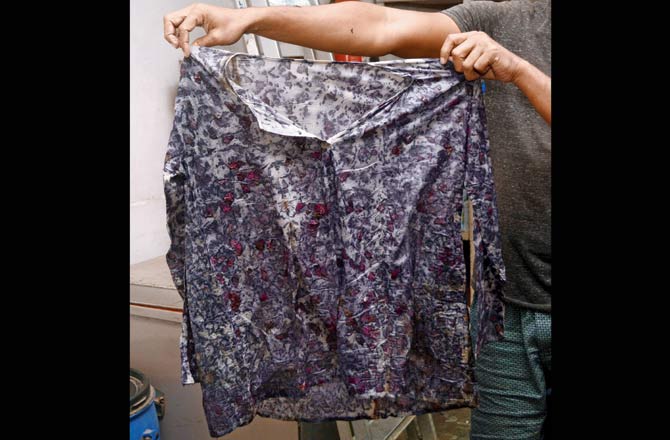
After being steamed on low heat to release organic colour, the fabric unfurls to reveal a dyed cloth
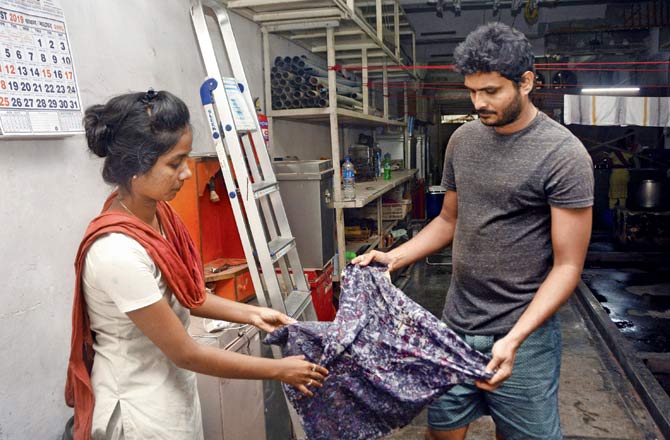

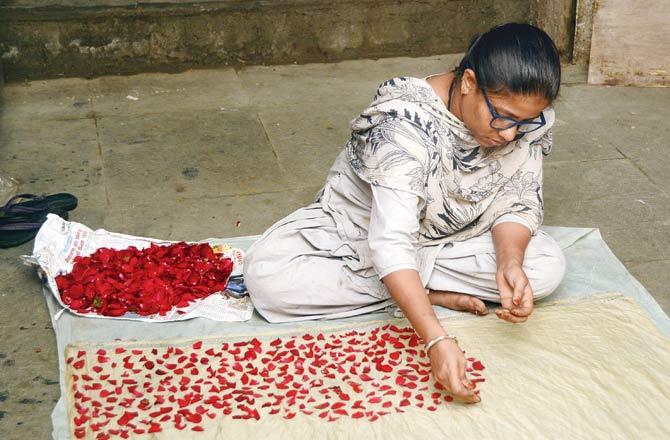
In the process of 'bundle' dyeing, petals are placed on a length of fabric and bound tightly together with string. Pics/Sneha Kharabe
Catch up on all the latest Mumbai news, crime news, current affairs, and also a complete guide on Mumbai from food to things to do and events across the city here. Also download the new mid-day Android and iOS apps to get latest updates
 Subscribe today by clicking the link and stay updated with the latest news!" Click here!
Subscribe today by clicking the link and stay updated with the latest news!" Click here!







